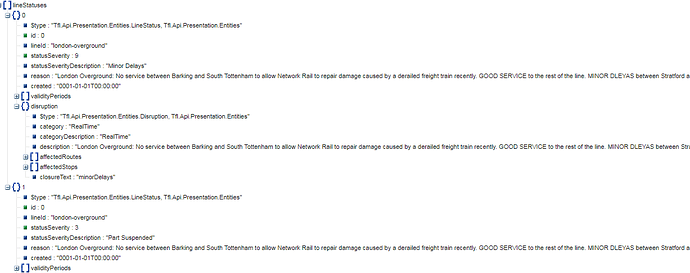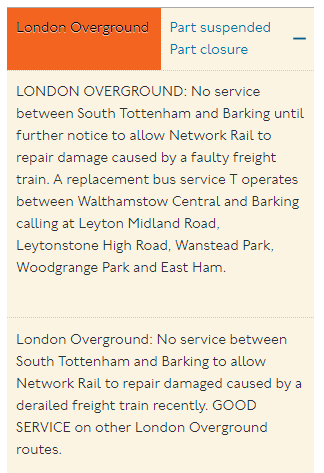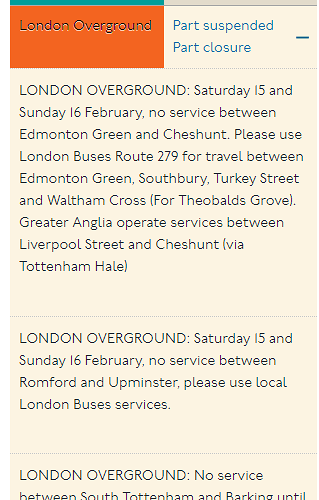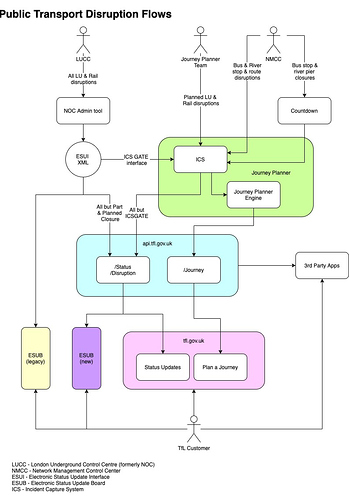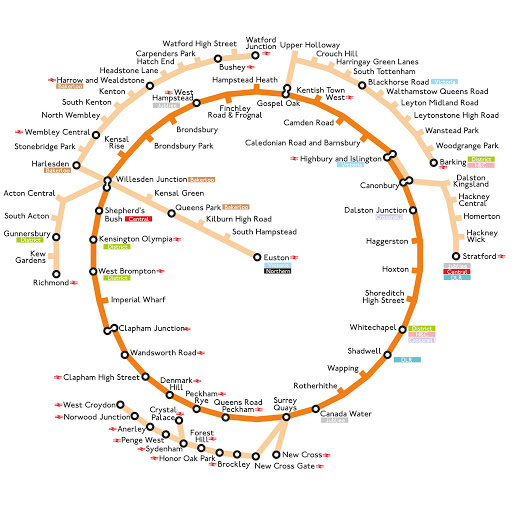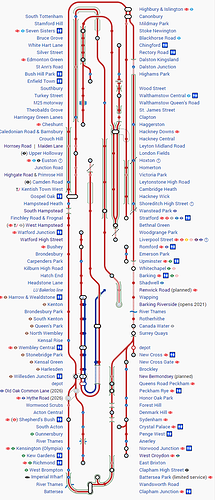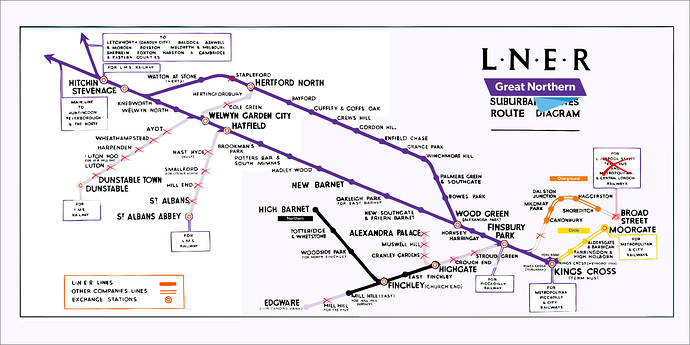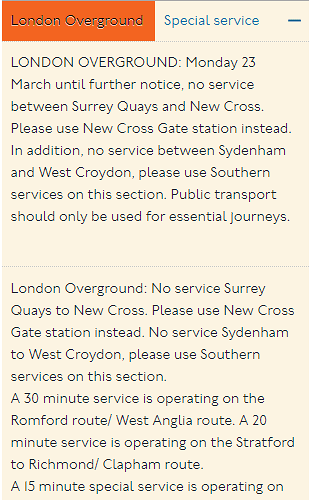Hi - I was wondering if there’s any way to disambiguate the 2 Overground status items, which presumably cover 2 different parts of the line/network, yet don’t have anything in the data to define that.
There are several issues:
- There’s nothing to distinguish the two entries geographically, though clearly they refer to different areas as one this morning showed “Minor delays” (that was on the West side) and the other is “Part suspended” (East side).
- Whenever there are 2 issues, the ‘reason’ text for each appears to be mirrored across both, presumably to show a picture of the entire line. That needs to be filtered by devs to avoid duplication of long messages in any app… but as both status entries must be processed & displayed (eg. Minor Delays. Part Suspended) there’s surely no reason to also duplicate the reason data that goes with that?
Dare I mention that the quality of Overground entries seems fairly poor at times. Can anyone give guidance to those who input?
- Today it includes the phrase “GOOD SERVICE to the rest of the line” even though that’s then contradicted by the text which follows it…
- The verbose phrase:
No service between Barking and South Tottenham to allow Network Rail to repair damage caused by a derailed freight train recently.
Could easily be shortened to:
No service between Barking and South Tottenham while Network Rail repair line damage.
…and we also had the double-typo word DLEYAS (twice) for the morning peak.
Hope something can be done to tidy this data in this useful resource!
Many Thanks
Dreq
